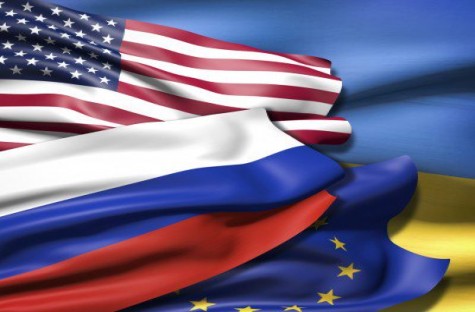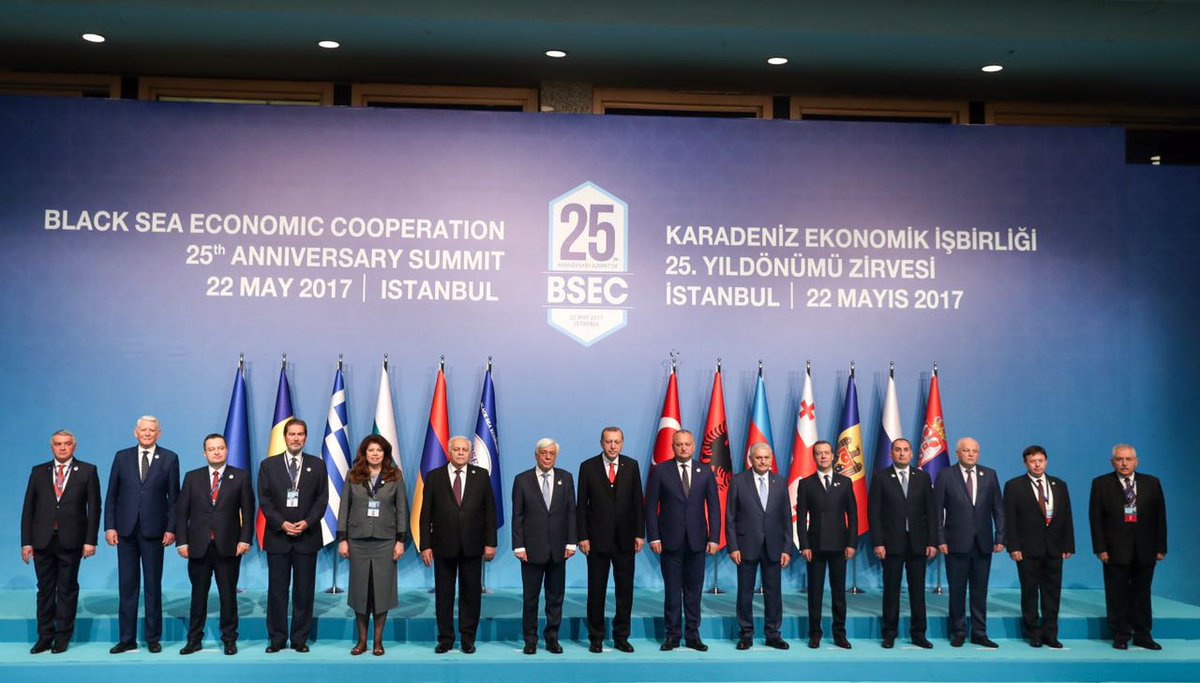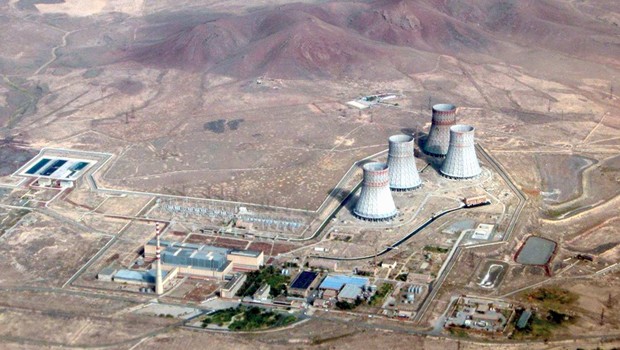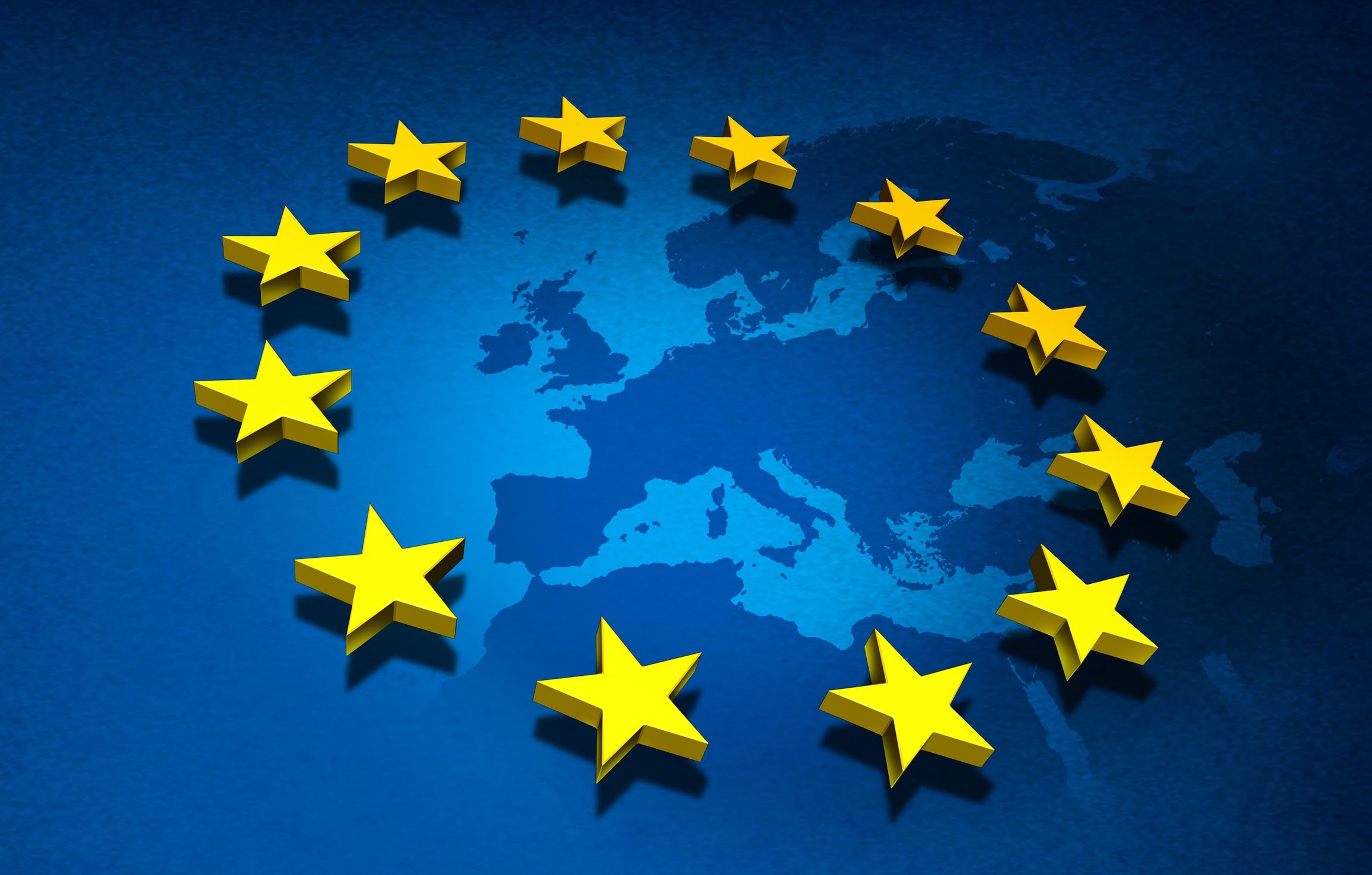
The Association of Southeast Asian Nations (ASEAN) was established in 1967 with the signing of ASEAN Declaration (also known as Bangkok Declaration) by the founding members; Indonesia, Malaysia, Philippines, Singapore, and Thailand. ASEAN expanded until 1999 and 5 more countries joined the association: Brunei, Vietnam, Laos, Myanmar, and Cambodia. The aim and the purpose of ASEAN mainly covers economic growth, regional peace and stability, close cooperation in the region both with the regional and international actors, cooperation on social, cultural and technical areas.[1]
This year, ASEAN held its 28th Summit confined to its members only and 29th Summit with other participants in Laos between the dates 6-8 September 2016.[2] Meetings were held on different levels and sectors. Agenda of the region was already busy before the ASEAN Summit had started because of the territorial disputes over the South China Sea, particularly between China and ASEAN member Philippines. Vietnam, Malaysia, Brunei, and Taiwan also have claims over the sea. Disputes over the South China Sea have become one of the hot topics among regional and outside actors, such as United States. Such disputes have turned this sea into a potential flashpoint of conflict.
Therefore these disputes among relevant parties over the South China Sea have been one of the key challenges to tackle in the region and it is vital to find a peaceful solution focusing on mutual benefits, as China is a global economic power and a highly influential actor particularly in Asia. South China Sea is not only an important livelihood for the fishermen of the region, but it is also a sea trade route which is worth approximately 5 trillion US Dollars and is estimated to contain a significant amount of natural gas and oil reserves. U.S. Energy Information Administration notes that “South China Sea contains approximately 11 billion barrels of oil and 190 trillion cubic feet of natural gas in proved and probable reserves.”[3] Its geopolitical location is also one of the added values. Therefore, it is important to obey international law and adopt a win-win policy for a sustainable cooperation. Any armed conflict over this disputed sea or militarization in the region will have severe economic and military repercussions not only for Asia, but also for the rest of the world.
Considering the decision taken by the Permanent Court of Arbitration of the UN in July 2016, which was against China’s claims and interests, and which concludes its decision by stating that “…there was no legal basis for China to claim historic rights to resources within the sea areas falling within the ‘nine-dash line’”[4], the issue was among the top priority items of the global agenda. As China rejected the decision taken by the Court, tensions in the region were expected to have a big impact on the summit.
This disputed topic definitely had the potential to up the tensions in the Summit, as right before the Summit, Defense Ministry of the Philippines showed photographs and a map, stating that the number of the Chinese vessels near Scarborough Shoal was markedly increased.[5]
Therefore, it was expected to witness discussions over this issue at the Summit. However, despite the potential for tension, all parties tried to lower the tensions by paying a particular focus on the “regional stability and security”. As for the position of the United States, US President Barrack Obama stated that regional leaders had affirmed that disagreements should be resolved peacefully, through legal means calling parties to lower the tensions.[6] It should be noted; however, that the United States itself is at loggerheads with China over the South China Sea; since as China asserts more intensely its claims over South China Sea, the US intensifies its freedom of navigation acts (using its military planes and ships to pass through territories claimed by China) to challenge China’s claims over this sea and counter China’s growing influence in Asia.
One month before the summit, Defense Minister of Indonesia underlined the maritime security issue deriving from the disputes over the sea by stating; "Even though the dispute has not yet been settled, the utmost importance is that sea routes can be secured," after a hearing on June 13, at the House of Representatives in Jakarta.[7] Back in July 2016, ASEAN members and China met in Vientiane and declared a joint statement on South China Sea titled “The Full and Effective Implementation of The Declaration on The Conduct of Parties in The South China Sea, 24 July 2016, Vientiane” which contains most importantly freedom of navigation and avoiding any act which may increase the tensions. In a nutshell, the parties gave signals before the summit that they wished to focus on the solution of the problem by peaceful means.[8]
Within the framework of the same spirit, all parties are aware of the critical conditions, and a similar policy was adopted at the ASEAN summit, and parties focused on the stability rather than the “conflict” or “dispute”. Le Luong Minh, Secretary General of ASEAN, told the following: “Both China and the United States are among the most important partners of ASEAN, and ASEAN does not want to have to choose between those partners”[9]. His statement can be interpreted as the necessity of balanced relations in the region in order to provide stability and avoid any conflict, since choosing between the current superpower (the US) and its most likely challenger (China) is not productive for an association built for the explicit purpose of economic growth and regional peace and stability.
Eventually, agenda of the ASEAN summit focused on regional development and mainly covered terrorism, extremism, climate issues, human trafficking, migration, maritime security and transnational crimes.[10] At the 2016 ASEAN summit, leaders of the ASEAN member countries adopted documents reflecting their future prospects on the region. For instance, members adopted the Master Plan on ASEAN Connectivity 2025 (MPAC 2025) on 6th of September that focuses on 5 areas: “sustainable infrastructure, digital innovation, seamless logistics, regulatory excellence and people mobility”. MPAC 2025 succeeds the Master Plan on ASEAN Connectivity 2010 that was adopted at the 17th ASEAN Summit.[11] Additionally, ASEAN members adopted the 3rd Work Plan of the Initiative for ASEAN Integration (IAI Work Plan III) at the Summit. IAI Work Plan III is a supplement 5-year plan of “ASEAN 2025: Forging Ahead Together” and consists of 3 main principles: “narrow the development gap, enhance the region’s competitiveness and support the implementation of the three Community Blueprints” that ASEAN Leaders adopted in 2015.[12] Since the beginning of the IAI Work Plan, 102 Million US Dollars was dedicated to over 600 projects and activities. It also had positive impacts on narrowing down the development gap between the less developed Cambodia, Laos, Myanmar, and Vietnam and other ASEAN members.[13]
It can be said that fostering regional connectivity and establishing a joint understanding towards the future of the security were the main motivations behind the documents and decisions produced by the end of the 2016 Summit.
Photo: Asean.org
[1] ASEAN official web page: http://asean.org/asean/about-asean/
[2] For more information about the Summits please visit ASEAN official web page: http://asean.org/asean/asean-structure/asean-summit/28th-asean-summit/
[3] EIA, South China Sea Overview, 07.02.2014, https://www.eia.gov/beta/international/regions-topics.cfm?RegionTopicID=SCS (Access Date: 10.10.2016).
[4] Phillips, T. , Bowcott, O. & Holmes, O., “Beijing rejects tribunal's ruling in South China Sea case”, The Guardian, 12.07.2016, https://www.theguardian.com/world/2016/jul/12/philippines-wins-south-china-sea-case-against-china (Access Date: 10.10.2016).
[5] Reuters, “Tensions over South China Sea belie summit cordiality”, 07.09.2016, http://www.reuters.com/article/us-asean-summit-southchinasea-idUSKCN11D08P (Access date: 06.10.2016).
[6] VOA News, “At ASEAN Summit, 'No Comment' Expected on S. China Sea Court Ruling”, 06.09.2016, http://www.voanews.com/a/at-asean-summit-no-comment-expected-on-south-china-sea-unclos-ruling/3495918.html (Access date: 07.10.2016).
[7] Sapiie, M.A. “RI honest broker in South China Sea dispute: Defense Minister”, The Jakarta Post, 10.06.2016, http://www.thejakartapost.com/news/2016/06/13/ri-honest-broker-in-south-china-sea-dispute-defense-minister.html (Access date: 07.10.2016).
[8] For more information please visit ASEAN Official web page: http://asean.org/joint-statement-of-the-foreign-ministers-of-asean-member-states-and-china-on-the-full-and-efective-implementation-of-the-declaration-on-the-conduct-of-parties-in-the-south-china-sea-24-july-2016-vie/
[9] Reuters, “Asia leaders tiptoe around South China Sea tensions”, 08.09.2016, http://uk.reuters.com/article/uk-asean-summit-idUKKCN11E0E8 (Access date: 10.10.2016).
[10] “29th ASEAN Summit enters day 2 in Laos”, PressTV, 07.09.2016, http://www.presstv.ir/Detail/2016/09/07/483545/ASEAN-Summit-Laos-Vientiane-South-China-Sea (Access Date: 08.09.2016).
[11] ASEAN Official webpage: http://asean.org/asean-leaders-adopt-master-plan-on-connectivity-2025/
[12] ibid
[13] ibid
© 2009-2025 Center for Eurasian Studies (AVİM) All Rights Reserved
No comments yet.
-
TURKIC COUNCIL AND EURASIAN COOPERATION IN THE LIGHT OF DEVELOPMENTS IN THE REGION
Özge Nur ÖĞÜTCÜ 24.02.2015 -
 EUROPEAN UNION EASTERN PARTNERSHIP POLICY AND RUSSIA’S INCREASING INFLUENCE
EUROPEAN UNION EASTERN PARTNERSHIP POLICY AND RUSSIA’S INCREASING INFLUENCE
Özge Nur ÖĞÜTCÜ 13.03.2014 -
 BUSY FEBRUARY AGENDA: UKRAINE ON THE FOCUS
BUSY FEBRUARY AGENDA: UKRAINE ON THE FOCUS
Özge Nur ÖĞÜTCÜ 22.02.2015 -
 25TH ANNIVERSARY SUMMIT OF THE BLACK SEA ECONOMIC COOPERATION
25TH ANNIVERSARY SUMMIT OF THE BLACK SEA ECONOMIC COOPERATION
Özge Nur ÖĞÜTCÜ 31.05.2017 -
 METSAMOR AND REGIONAL NUCLEAR-SECURITY IN THE SOUTH CAUCASUS
METSAMOR AND REGIONAL NUCLEAR-SECURITY IN THE SOUTH CAUCASUS
Özge Nur ÖĞÜTCÜ 14.06.2016
-
 BAKALIAN CASE APPEAL HEARING HELD IN CALIFORNIA
BAKALIAN CASE APPEAL HEARING HELD IN CALIFORNIA
Aslan Yavuz ŞİR 08.02.2019 -
 EUROPE AND THE EUROPEAN UNION - THE EUROPEAN SEGREGATION
EUROPE AND THE EUROPEAN UNION - THE EUROPEAN SEGREGATION
Alev KILIÇ 29.01.2018 -
ARMENIA AND THE ARMENIAN DIASPORA
Alev KILIÇ 08.10.2012 -
THE EUROPEAN UNION AND THE CAUCASUS
Alev KILIÇ 06.12.2012 -
FORMER ARMENIAN FOREIGN MINISTER V. OSKANIAN IS INCRIMINATED
Alev KILIÇ 03.10.2012
-
25.01.2016
THE ARMENIAN QUESTION - BASIC KNOWLEDGE AND DOCUMENTATION -
12.06.2024
THE TRUTH WILL OUT -
27.03.2023
RADİKAL ERMENİ UNSURLARCA GERÇEKLEŞTİRİLEN MEZALİMLER VE VANDALİZM -
17.03.2023
PATRIOTISM PERVERTED -
23.02.2023
MEN ARE LIKE THAT -
03.02.2023
BAKÜ-TİFLİS-CEYHAN BORU HATTININ YAŞANAN TARİHİ -
16.12.2022
INTERNATIONAL SCHOLARS ON THE EVENTS OF 1915 -
07.12.2022
FAKE PHOTOS AND THE ARMENIAN PROPAGANDA -
07.12.2022
ERMENİ PROPAGANDASI VE SAHTE RESİMLER -
01.01.2022
A Letter From Japan - Strategically Mum: The Silence of the Armenians -
01.01.2022
Japonya'dan Bir Mektup - Stratejik Suskunluk: Ermenilerin Sessizliği -
03.06.2020
Anastas Mikoyan: Confessions of an Armenian Bolshevik -
08.04.2020
Sovyet Sonrası Ukrayna’da Devlet, Toplum ve Siyaset - Değişen Dinamikler, Dönüşen Kimlikler -
12.06.2018
Ermeni Sorunuyla İlgili İngiliz Belgeleri (1912-1923) - British Documents on Armenian Question (1912-1923) -
02.12.2016
Turkish-Russian Academics: A Historical Study on the Caucasus -
01.07.2016
Gürcistan'daki Müslüman Topluluklar: Azınlık Hakları, Kimlik, Siyaset -
10.03.2016
Armenian Diaspora: Diaspora, State and the Imagination of the Republic of Armenia -
24.01.2016
ERMENİ SORUNU - TEMEL BİLGİ VE BELGELER (2. BASKI)
-
AVİM Conference Hall 24.01.2023
CONFERENCE TITLED “HUNGARY’S PERSPECTIVES ON THE TURKIC WORLD"









